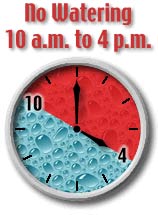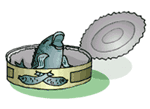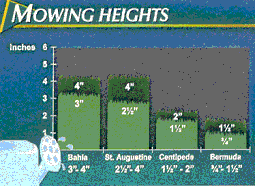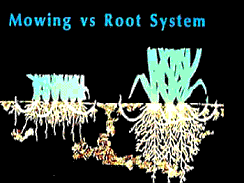Lawncare & Irrigation
Understanding your lawn’s environmental needs and tailoring lawn care practices to suit local conditions allows for a healthy, environmentally-friendly lawn. Design your yard so it thrives only on rainwater.
For a complete guide to designing a Florida yard, checkout Florida Yards & Neighborhoods.
Here are a few tips to get you started:
Mulch your garden and landscape beds - mulch helps keep the soil moist and reduces erosion and weeds. Avoid piling mulch against plant stems and tree trunks to prevent rot.
Unsure how much mulch is needed? Check here to find out.

Water the lawn at the right time - watering in the early morning or late evening when temperatures and wind speeds are the lowest will reduce water loss through evaporation. Check with your local Water Management District office or Cooperative Extension Service office to find out how often to water. Tighter watering restrictions may be in order for different counties ranging from one day per week to two days per week and as restrictive as from 8:00 am to 6:00 pm for no watering.
Watering Schedule at Harmony – the watering schedule at Harmony is regulated by the Toho Water Authority and South Florida Water Management District. The days that you can irrigate are strictly regulated. Water is a precious resource and the below restrictions allow one to maintain a healthy landscape while using an efficient watering method. The below information was excerpted from South Florida Water Management District and Toho Water Authority Watering Guidelines:
Know Your Days:
HARMONY USES RECLAIMED WATER SO THE WATERING SCHEDULE FOR HOMES ARE ON WEDNESDAY AND SATURDAY ONLY.
- Reclaimed water will be turned on no later than 9:00 a.m. on the designated day. A reclaimed watering day is 24-hour period that starts at 9:00 a.m., and continues past midnight until 9:00 am of the following day. This means that if you want to water in the early morning hours, you would set your controller for the day after your watering day.
- Example: If your watering days are Saturday and Wednesday, and you wanted to start irrigating at 3:00 a.m., you would set the controller run days to Sunday and Thursday.
- Some exceptions apply (see below).
No Watering Between 10:00 a.m. and 4:00 p.m.
The only exceptions are:
- Watering in lawn care chemicals (fertilizer, pesticides, insecticides, herbicides, fungicides) as directed by manufacturer or following best management practices
- Repair and/or maintenance of the irrigation system
- Water discharged from a water-cooled air conditioning system
- Watering with a hand-held hose with a shutoff nozzle
Violations
- Irrigating outside of designated watering days
- Irrigating outside of designated watering times
- Leaks in the irrigation system
- Over-watering that causes significant runoff into adjacent property or right of way
- Watering after significant rainfall (A functioning rain sensor is required)
- Penalties: Violators will receive at least one warning, and generally two warnings. However, refusal to correct a wasteful situation or a pattern of repeated violations may cause irrigation or reclaim water service to be discontinued. There are no monetary fines. Repeat offenders will receive a certified letter that includes a shutoff date
Calibrate your irrigation system - be sure to calibrate your irrigation system to determine how long to run the system so that it delivers the amount of water recommended for your area. Irrigation systems can be very different and could be delivering too much, not enough, or just the right amount of water, depending on the type of irrigation system and the zone being watered.

Position sprinklers properly - make sure the water lands on your plants and grass and not on paved areas.
Lawns only need about ¾ inch of water at a time. Place tuna cans or measuring cups around the yard and measure the water collected in half an hour. Spread several cans/cups around the yard to measure even distribution.Use micro-irrigation hoses - these hoses can lay above ground or slightly buried and allow for water to seep through to a plant’s roots.
Make the most out of rainwater - turn downspouts from rain gutters towards areas with planting. Rainwater can also be collected and stored in a rain barrel for dry spells.
Mow your grass to the right height - the higher the grass, the more extensive the root system becomes.
Recommended mowing heights and root system:




